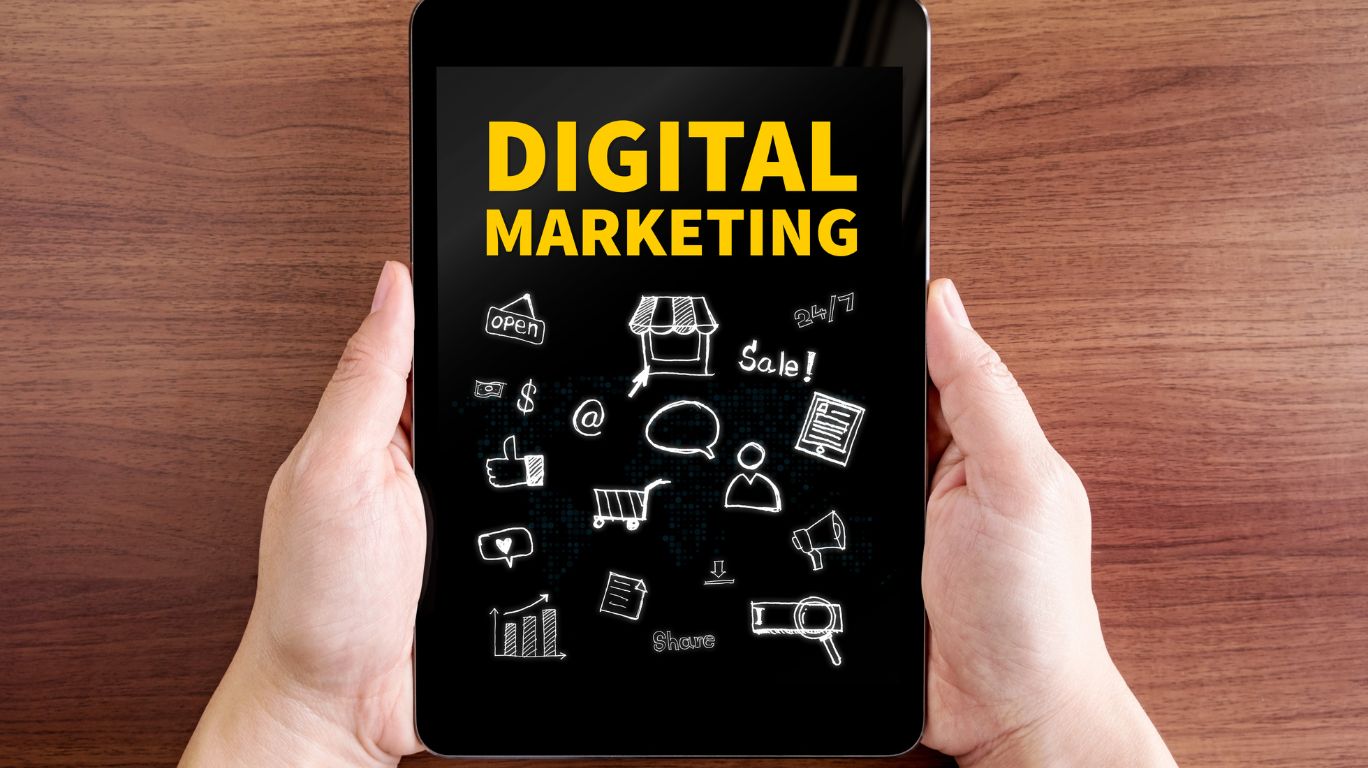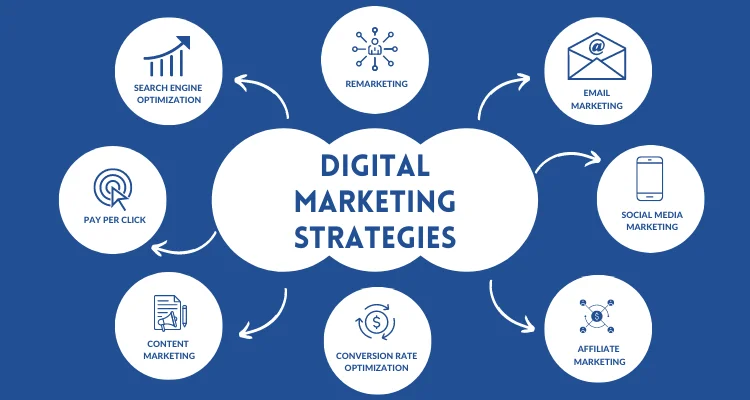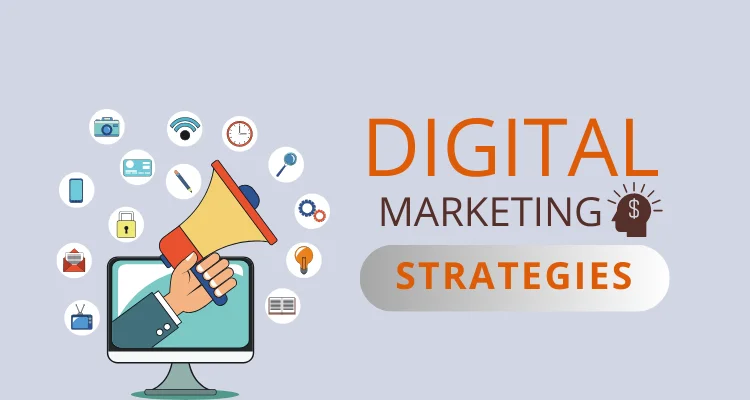Table of Contents
In today’s highly connected world, digital marketing has become the cornerstone of business growth. From startups to multinational corporations, organizations of all sizes rely on digital platforms to reach their target audience, build relationships, and increase sales. Unlike traditional marketing, digital marketing offers measurable, scalable, and targeted strategies that are more cost-effective and accessible.
This article explores what digital marketing is, its key components, tools, and strategies, and how businesses can leverage it to achieve long-term success.

xr:d:DAGABhDOWhg:118,j:4927798504354348,t:24040806
What is Digital Marketing
Digital marketing refers to all marketing efforts that use electronic devices or the internet. Businesses use digital channels such as search engines, social media, email, websites, and mobile apps to connect with current and prospective customers.
It encompasses a wide range of tactics and techniques, including:
- Search Engine Optimization (SEO)
- Content Marketing
- Social Media Marketing
- Pay-Per-Click (PPC) Advertising
- Email Marketing
- Affiliate Marketing
- Influencer Marketing
Why is Digital Marketing Important?
The digital transformation has reshaped how consumers interact with brands. Here are some compelling reasons why digital marketing is essential:
- Global Reach
Digital marketing enables businesses to reach customers anywhere in the world. - Cost-Effective
Compared to traditional marketing methods like TV and print, digital marketing is more affordable. - Measurable Results
With tools like Google Analytics and Facebook Insights, businesses can track and optimize performance. - Targeted Marketing
Businesses can target specific demographics, interests, and behaviors. - Real-Time Engagement
Brands can interact with customers instantly through social media and live chat.
Key Components of Digital Marketing
1. Search Engine Optimization (SEO)
SEO is the process of optimizing your website to rank higher in search engine results pages (SERPs). The goal is to increase organic (non-paid) traffic from search engines like Google and Bing.
Main Elements of SEO:
- On-page SEO – optimizing content, titles, meta descriptions, and keywords.
- Off-page SEO – building backlinks and brand authority.
- Technical SEO – improving site speed, mobile responsiveness, and site architecture.
2. Content Marketing
Content is at the heart of digital marketing. C marketing involves creating and distributing valuable, relevant, and consistent content to attract and retain a clearly defined audience.
Types of Content:
- Blog posts
- Infographics
- Videos
- Ebooks
- Case studies
- Podcasts
Content marketing helps build trust, educate audiences, and drive conversions.
3. Social Media Marketing
Social media marketing is the use of platforms like Facebook, Instagram, Twitter, LinkedIn, TikTok, and YouTube to promote your brand and engage with customers.
Benefits:
- Increases brand awareness
- Boosts engagement
- Enhances customer service
- Drives traffic and leads
Successful social media strategies involve regular posting, community management, influencer partnerships, and paid advertising.
4. Pay-Per-Click Advertising (PPC)
PPC is a model of internet marketing in which advertisers pay a fee each time their ad is clicked. The most popular PPC platform is Google Ads.
Other platforms include:
- Facebook Ads
- Instagram Ads
- LinkedIn Ads
- Twitter Ads
- YouTube Ads
PPC allows for immediate visibility, especially useful for new businesses or product launches.

See also
- Hostinger Review 2025: Is It the Best Budget Hosting?
- Hostinger for WordPress: Full Setup + Performance Guide
- Hostinger vs GoDaddy: Who Offers Better Value?
5. Email Marketing
Email marketing remains one of the most powerful tools for nurturing leads and maintaining customer relationships.
marketing campaigns can include:
- Newsletters
- Product updates
- Promotions and discounts
- Abandoned cart reminders
- Customer onboarding
Automation platforms like Mailchimp, GetResponse, and ConvertKit simplify the process and allow for personalization and segmentation.
6. Affiliate Marketing
In affiliate marketing, businesses partner with individuals or other businesses (affiliates) who promote their products and earn a commission for each sale.
This is a low-risk, high-reward channel and is widely used in the e-commerce and software industries.
7. Influencer Marketing
This involves collaborating with influencers—individuals with a strong following on social media or blogs—to promote your product.
It’s especially effective in lifestyle, fashion, beauty, fitness, and travel niches.
Popular Tools for Digital Marketing
Here are some essential tools used by digital marketers:
| Tool | Purpose |
|---|---|
| Google Analytics | Website traffic and behavior |
| SEMrush / Ahrefs | SEO and keyword research |
| Mailchimp / ConvertKit | Email marketing |
| Canva | Graphic design |
| Hootsuite / Buffer | Social media scheduling |
| WordPress / Wix | Website creation |
| Google Ads / Meta Ads | Paid advertising |
| ChatGPT / Jasper | AI-powered content creation |
Current Trends in Digital Marketing (2025)
- AI and Automation
Chatbots, content generators, and predictive analytics powered by AI are transforming customer experiences. - Video Marketing Dominance
Short-form video content (e.g., TikTok, YouTube Shorts) is driving engagement. - Voice Search Optimization
More users are using smart speakers and voice assistants. - Personalization
Consumers expect tailored content and experiences. - Interactive Content
Quizzes, polls, calculators, and interactive infographics improve engagement. - Sustainability Marketing
Brands that promote ethical, eco-friendly practices are winning customer trust.
Digital Marketing Strategy: Step-by-Step Guide
Step 1: Define Your Goals
What do you want to achieve?
- Increase traffic
- Generate leads
- Drive sales
- Build brand awareness
Step 2: Know Your Audience
Use buyer personas to understand:
- Age, gender, income
- Interests and challenges
- Online behavior and platforms they use
Step 3: Choose Your Channels
Not all platforms work for every business. Focus on where your audience is most active.
Step 4: Create Valuable Content
Develop a content calendar with blog posts, videos, social media posts, and email campaigns tailored to your audience’s needs.
Step 5: Optimize and Automate
Use SEO best practices, email automation tools, and social scheduling platforms to streamline your marketing.
Step 6: Monitor and Improve
Track KPIs such as:
- Website traffic
- Conversion rate
- Cost per click (CPC)
- Email open and click rates
- ROI
Make data-driven decisions and continuously refine your strategy.
Common Challenges in Digital Marketing
- High Competition
Standing out in crowded markets can be difficult. - Algorithm Changes
Platforms like Google and Facebook frequently change algorithms. - Content Saturation
Audiences are overwhelmed with content—quality is more important than quantity. - Privacy Concerns
Marketers must comply with data protection laws like GDPR and CCPA. - Technical Skills Gap
Small businesses often lack the in-house expertise to run campaigns effectively.
Conclusion
Digital marketing is a dynamic, fast-evolving field that offers immense opportunities for businesses willing to adapt and innovate. Whether you’re a freelancer, small business owner, or a marketing professional, understanding the fundamentals and staying updated with trends is essential to success.
By combining strategy, creativity, and technology, digital marketing empowers brands to connect with their audience in meaningful ways—driving engagement, loyalty, and revenue in the process.

Call to Action
Are you ready to elevate your business with digital marketing? Start by identifying your goals, choosing the right channels, and delivering content that truly resonates. Whether you’re doing it yourself or hiring experts, digital marketing is no longer optional—it’s essential.


